Making Sense
Occupational therapy best practices ask us to integrate knowledge into practice. Each episode offers a conversation aimed at translating the most current research into clinical action for occupational therapy practitioners. Produced by the STAR Institute, a 501(c)3 nonprofit organization, in an effort to further our commitment to impacting the quality of life.
Episodes

Thursday Jan 20, 2022
Making Sense Season 2 is Sponsored by Calm Strips
Thursday Jan 20, 2022
Thursday Jan 20, 2022
Calm Strips is the proud sponsor of Season 2 of Making Season.
Calm Strips began as a small piece of blue tape wrapped on the founder’s finger. He looked a bit silly wearing the tape, not to mention he had a lone sticky finger at the end of the day. So, then came the idea to create something that you could stick anywhere and take everywhere you may need a little bit of calm. The Calm Strips' mission is to further destigmatize the need for support and help and their dedication to this mission is unwavering.
To learn more about Calm Strips and to purchase your strips today, visit www.calmstrips.com. Save 20% on your order for $20 or more with promo code CALMSTAR20.
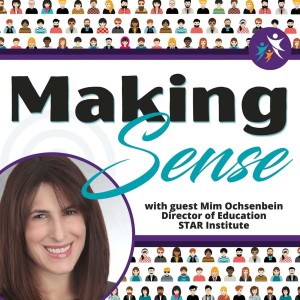
Thursday Jan 20, 2022
Thursday Jan 20, 2022
Play is a child’s occupation and has a profound impact on attachment and neuro-development. Therapeutic and developmental experiences benefit from a deeper understanding of the importance and impact of play. Today, Carrie Schmitt and Mim Ochsenbein unpack The Interpersonal Neurobiology of Play by highlighting and defining Play, while considering both the impact of play on brain development and the way that play in the context of relationship is powerful for driving development.
Resources Mentioned In this episode:
Brown, S. L., & Vaughan, C. C. (2010). Play: How it shapes the brain, opens the imagination, and invigorates the soul. Avery.
De Waal, F (2019). Mama's last hug: Animal emotions and what they tell us about ourselves. W. W. Norton & Company.
Kestly, T. (2014). The interpersonal neurobiology of play : Brain-building interventions for emotional well-being (First ed., Norton series on interpersonal neurobiology). New York: W.W. Norton & Company.
Stephen Porges on Polyvagal Theory: https://www.stephenporges.com/
Dan Siegel on Interpersonal Neurobiology: https://m.drdansiegel.com/about/interpersonal_neurobiology/
Yogman, M., Garner, A., Hutchinson, J., Hirsh-Pasek, K., & Golinkoff, R. M. (2018). The power of play: A pediatric role in enhancing development in young children. Pediatrics, 142(3). https://doi.org/10.1542/peds.2018-2058
SPONSORED BY CALM STRIPS
To learn more about Calm Strips and to purchase your strips today, visit www.calmstrips.com. Save 20% on your order for $20 or more with promo code CALMSTAR20.

Wednesday Mar 31, 2021
Vestibular Sensory Processing Contributes to Sense of Self/Embodiment
Wednesday Mar 31, 2021
Wednesday Mar 31, 2021
The vestibular system is critically involved in integrating sensory signals from inside our bodies (interoception) with sensory signals from outside ourselves (exteroception). There is a large body of work showing that our sense of self stems from multisensory integration. Today, guest Lisa Porter, PhD, OTD, OTR/Land Carrie Schmitt, OTR/L unravel the important role of the vestibular system in our sense of self. From the role, vestibular sensation plays in modulating sensory processing to vestibular sensations contribution to safety and perspective taking, listen to Lisa and Carrie discuss the impact of this important sensory system.
Resources mentioned in this episode:
Kestly, T. (2014). The interpersonal neurobiology of play: Brain-building interventions for emotional well-being (First ed., Norton series on interpersonal neurobiology). New York: W.W. Norton & Company.
Lopez C. (2015). Making Sense of the Body: the Role of Vestibular Signals. Multisensory Research, 28(5-6), 525–557. https://doi.org/10.1163/22134808-00002490
Polkinghorne, D. E. (1996). Transformative narratives: From victimic to agentic life plots. American journal of occupational therapy, 50(4), 299-305.
Porges, S. (2019). Brain-body connection may ease autistic people’s social problems. https://www.spectrumnews.org/opinion/viewpoint/brain-body-connection-may-ease-autistic-peoples-social-problems/
Dan Siegel on Interpersonal Neurobiology: https://m.drdansiegel.com/about/interpersonal_neurobiology/
Find Lisa Porter at https://sensorykidsot.com/
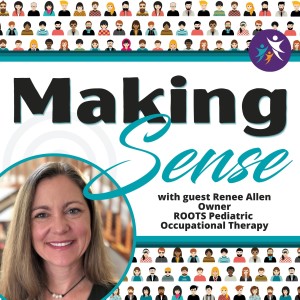
Wednesday Mar 17, 2021
Wednesday Mar 17, 2021
Motor development is essentially psychological. In this conversation, Carrie Schmitt, OTR/L and Renee Allen, MS, OTR/L discuss the idea that motor development informed by sensation allows us to act on the world in the context of culture and relationship and ultimately enables skill acquisition across both motor and psychological milestones. Using clinical examples, they unpack what motor development challenges can tell us about a child’s sensory and psychological development.
Resources mentioned in this episode:
Adolph, Karen E, & Hoch, Justine E. (2019). Motor Development: Embodied, Embedded, Enculturated, and Enabling. Annual Review of Psychology, 70(1), 141-164.
Bialer, D., & Miller, L.J. (2011). No longer A SECRET: Unique common strategies for children with sensory or motor challenges. Sensory World.

Wednesday Mar 03, 2021
Wednesday Mar 03, 2021
Sensory differences have a profound impact on learning. Colleen Whiting is our faculty specialist on school-based practice. Today, Carrie Schmitt and Colleen Whiting discuss an article highlighting a study aimed at capturing parent and teacher perspectives on how sensory differences affect learning and life at school. This conversation covers topics such as the current day impact of distance learning, sensory profiles mismatches, sense of agency, and what specific strategies work to support students with sensory differences. Parents and school-based therapists alike will benefit from this discussion.
Resources Mentioned In this episode:
Bialer, D., & Miller, L.J. (2011). No longer A SECRET: Unique common strategies for children with sensory or motor challenges. Sensory World.
Jones, E.K., Hanley, M., & Riby, D.M. (2020). Distraction, distress and diversity: Exploring the impact of sensory processing differences on learning and school life for pupils with autism spectrum disorders. Research in Autism Spectrum Disorders, 72, 101515.
Miller-Kuhaneck, H. & Kelleher, J. (2018). The classroom sensory environment assessment as an educational tool for teachers. Journal of Occupational Therapy Schools & Early Intervention. 10.1080/19411243.2018.1432442.
Miller, Lucy Jane, Anzalone, Marie E, Lane, Shelly J, Cermak, Sharon A, & Osten, Elizabeth T. (2007). Concept evolution in sensory integration: A proposed nosology for diagnosis. The American Journal of Occupational Therapy, 61(2), 135-140.
Piller, A., & Pfeiffer, B. (2016). The sensory environment and participation of preschool children with autism Spectrum disorder. OTJR Occupation Participation Health, 36(3), 103–111.
Short Child Occupational Profile (SCOPE): https://www.moho.uic.edu/productDetails.aspx?aid=9
Find more about the school-based course Colleen Whiting designed at https://www.sensoryhealth.org/basic/school-based-intensive-for-occupational-therapy-practitioners

Friday Feb 12, 2021
Friday Feb 12, 2021
In pediatric occupational therapy, play is often used as a therapeutic medium. Today Carrie Schmitt and Michele Parkins discuss how the ways in which we play can include emotion regulation alongside sensory motor regulation. They explore the concept of psychosensory experiences tying in temperament as it manifests in play and how this guides therapeutic play aligning with sensory modulation, discrimination and sensory motor development.
Resources Mentioned in this episode:
Foley, G. (2017). Play as regulation: Promoting self-regulation through play. Top Language Disorders 37(3), 241-258. doi:10.1097/TLD0000000000000129
Miller, Lucy Jane, Anzalone, Marie E, Lane, Shelly J, Cermak, Sharon A, & Osten, Elizabeth T. (2007). Concept evolution in sensory integration: A proposed nosology for diagnosis. The American Journal of Occupational Therapy, 61(2), 135-140.
Find Michele Parkins’ new webinar HERE.

Friday Feb 12, 2021
Introducing Making Sense, a STAR Institute Podcast
Friday Feb 12, 2021
Friday Feb 12, 2021
Executive Director Virginia Spielmann and Carrie Schmitt introduce the STAR Institute for Sensory Processing’s podcast and discuss how a podcast is a wonderful medium to further the vision and mission of STAR Institute. In addition, they discuss the cornerstones of the Occupational Therapy Practice Framework (OTPF-4) highlighting the OT’s unique ability to integrate macro and micro viewpoints into our practice. Listen in and hear how we plan to use this season of the podcast to share research to practice translation through our unique perspective on sensory integration, relationship, and regulation.
STAR Institute is a 501(c)3 organization, for more information and to donate please visit www.sensoryhealth.org.
Resources:
American Occupational Therapy Association. (2020). Occupational therapy practice framework: Domain and process (4th ed.). American Journal of Occupational Therapy, 74(Suppl. 2), 7412410010. https://doi. org/10.5014/ajot.2020.74S2001
Appiah, K. A. (2011). The honor code: How moral revolutions happen. Norton & Company.
Morris, Z. S., Wooding, S., & Grant, J. (2011). The answer is 17 years, what is the question: understanding time lags in translational research. Journal of the Royal Society of Medicine, 104(12), 510–520. https://doi.org/10.1258/jrsm.2011.110180
O'Rourke, P. (2011). The significance of reflective supervision for infant mental health work. Infant Mental Health Journal, 32(2), 165-173.
STAR Institute. (n.d.). Vision, Mission, & History. https://www.sensoryhealth.org/basic/vision-mission-history
TRANSCRIPTION - READ HERE
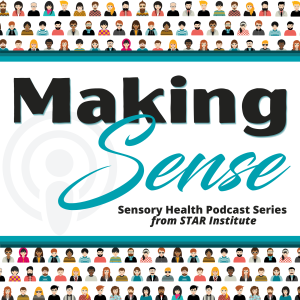
Friday Feb 12, 2021
Making Sense Season 1 is Dedicated to Janet Wright
Friday Feb 12, 2021
Friday Feb 12, 2021
This Making Sense podcast season is dedicated to the memory of Janet Wright. Who was Janet you ask? Janet was an incredibly enthusiastic occupational therapist who loved what she did. More importantly, she was always striving to further her education and was passionate about bringing that knowledge to her patients, parents, peers, and most especially OT students.
STAR Institute is a 501(c)3 organization, for more information and to donate please visit www.sensoryhealth.org.
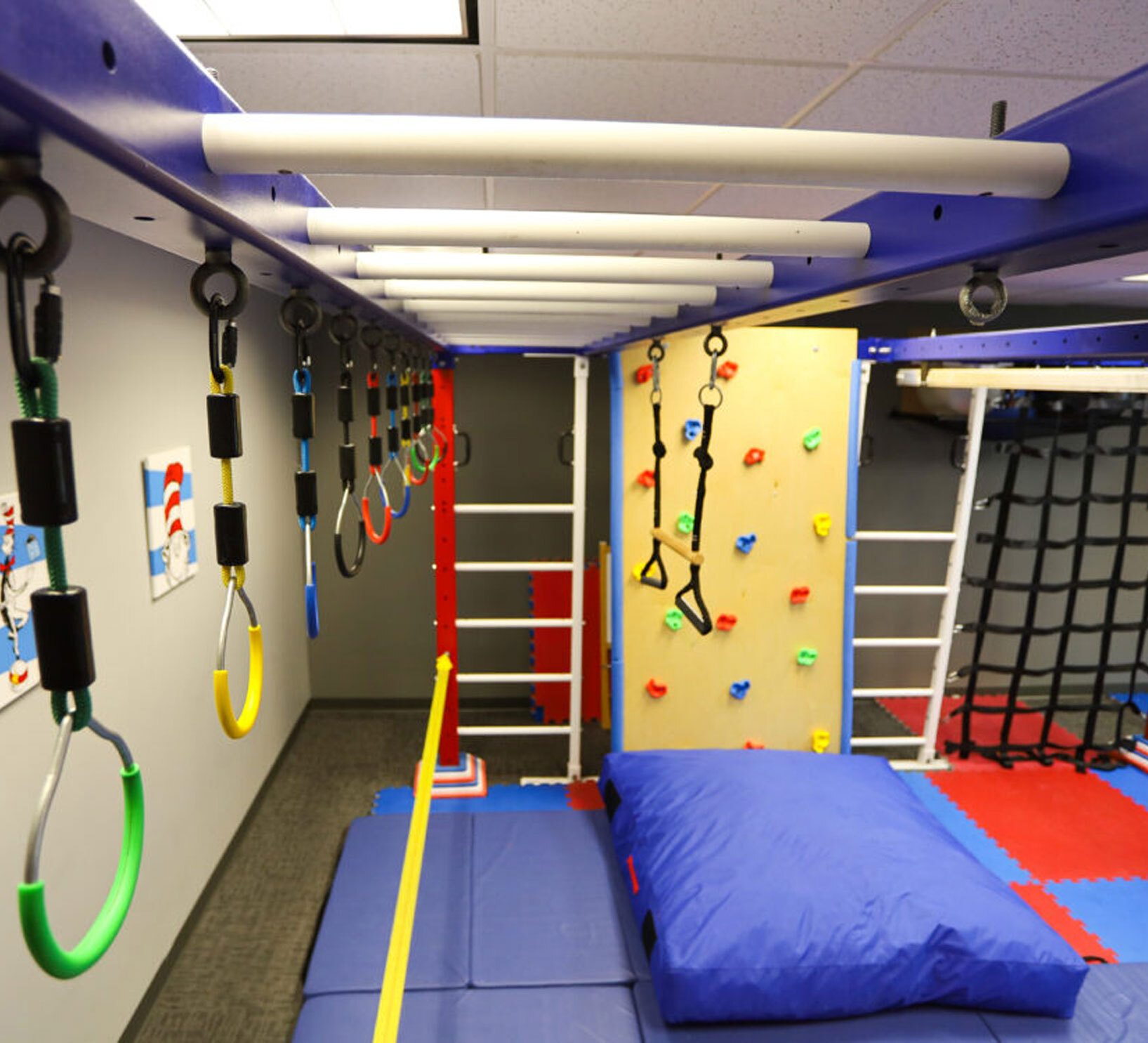
Season 3 is Sponsored by Summit Sensory Gym
Summit’s freestanding sensory integration therapy gyms provide an engaging, safe, and stimulating environment for children to explore and develop their sensory skills. By creating a space that encourages positive sensory experiences, children can learn how to better regulate their sensory system and respond to the world around them. The benefits of sensory integration therapy gyms are numerous. They provide a safe and stimulating environment for children to explore and develop their motor, language, and social skills in a fun and engaging way. Through this type of therapeutic play, children can learn how to better regulate their emotions and respond to different sensory stimuli.
Visit summitsensory.com to learn more and schedule your free design consult.
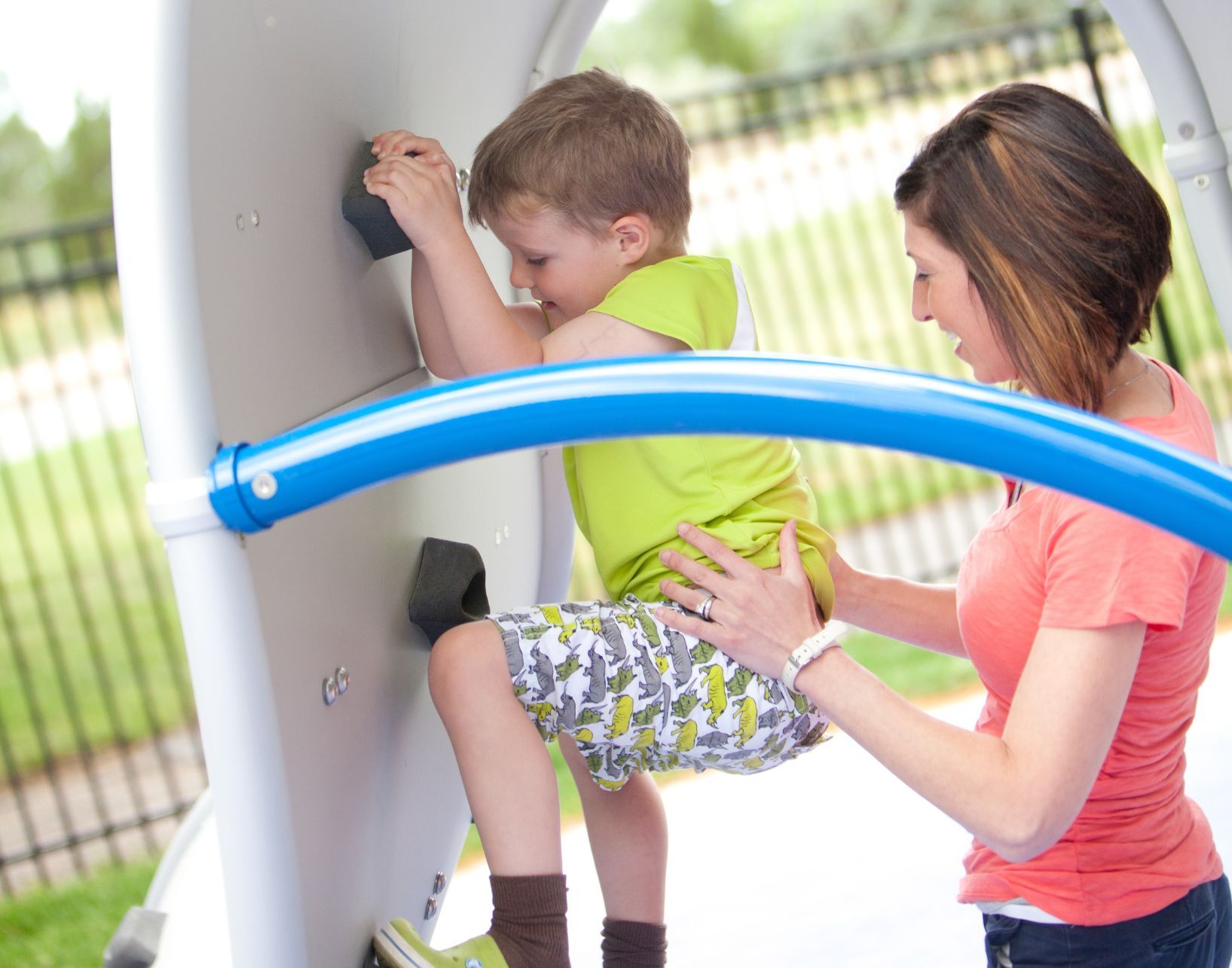
About STAR Institute
STAR Institute is the international leader for research, treatment, and education related to sensory integration and processing. As a 501(c)3 nonprofit organization, we are dedicated to improving mainstream awareness of sensory health and to providing life-changing support and resources for individuals and families across the lifespan. STAR Institute supports all areas of sensory health including mental health, school success, child development, parenting, relationships, and vocational success. For some, disordered sensory processing profoundly impacts daily functioning. However, many differences in sensory processing do not need to be disabling. We believe everyone should have access to high-quality support, resources, and treatment for sensory health.

